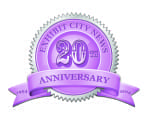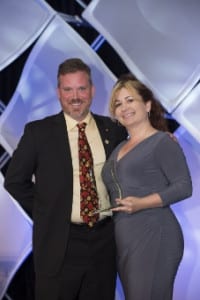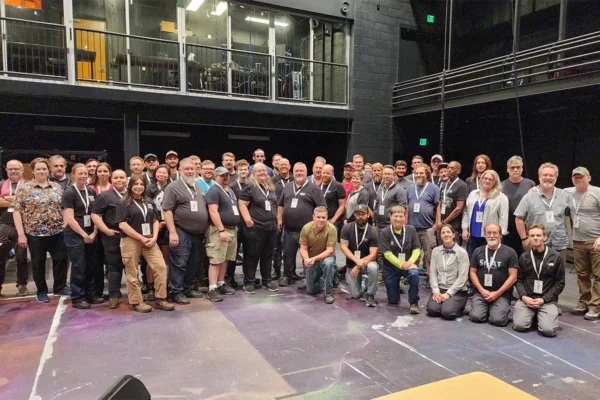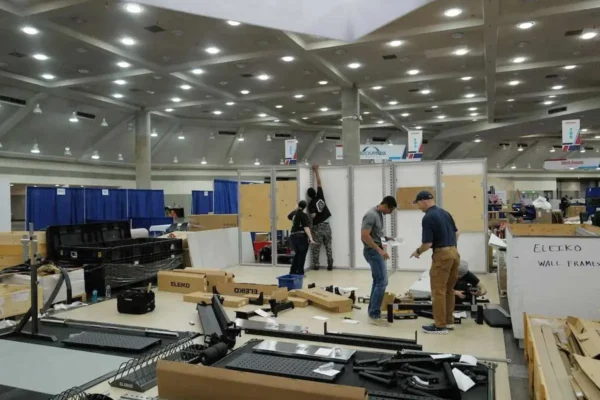 In December 2013, Dana Esposito, creative director at Elevation Exhibits and Events, won Designer of the Year at Exhibit Designers and Producers Association (EDPA) ACCESS in Marco Island, Fla. A more than 17-year veteran of the exhibit design industry, Esposito explains what winning meant to her and her thoughts on the exhibit design industry.
In December 2013, Dana Esposito, creative director at Elevation Exhibits and Events, won Designer of the Year at Exhibit Designers and Producers Association (EDPA) ACCESS in Marco Island, Fla. A more than 17-year veteran of the exhibit design industry, Esposito explains what winning meant to her and her thoughts on the exhibit design industry.
ECN: What does it mean to be recognized as Designer of the Year?
Frankly, it makes me feel less crazy as it is a wonderful compliment and validation. To me, it means that other designers and business leaders value some of the efforts I am a part of. These contributions are meant to benefit the health and future of our industry. I am committed to our industry, and they recognize the fact that many small impactful acts benefit the big picture.

ECN: What is your overall goal when designing an exhibit?
To get inside the client’s head and discover what they need. We cannot simply show them an exhibit that looks good. The design solution needs to have reasons for why it is smart for them.
ECN: What are the major challenges that exhibit designers face?
The most difficult things that hinder a designer are not getting clear needs and budget from a client, not being able to harness from a client what their truest goals are, and of course, time is always a challenge.
ECN: What current trends do you see in the exhibit design industry?
Interactive technology and better lighting solutions are becoming more accessible to clients with all budget ranges.
ECN: What new products are affecting exhibit design?
Some of the exhibit aluminum extrusion systems are really pushing further what they are capable of providing for solutions, which is a great tool. Lighting and fabric are continuing to become even better friends, making each other another great resource for designers searching for the smartest combination of materials.
ECN: Are there any common misconceptions about the exhibit design process?
I feel a common misconception is that designers are simply artists trying to make an interesting thing to look at. That thought is simply a knee jerk reaction to the word ‘designer.’ True designers are problem solvers. There are usually multiple reasons for why a booth looks the way it does. A creative individual needs to be able to articulate those reasons, tell that specific problem solving story and also be nimble enough to respond with changes as a project changes.
ECN: How has technology affected exhibit design?
After being in this industry over 17 years, I can interpret that question several ways. At this point, the exhibit structure is really a blank slate for what is not only happening inside it, but on its many surfaces. Interactive technology on show site and digital media content is an important tool. It is interesting, informative and engaging, which makes it an effective communication tool.
ECN: What design project have you enjoyed working on the most?
For me, rental projects are a guilty pleasure. If I can design a new custom rental booth for a client, which I know will eventually live in our rental inventory, and I have designed it properly from day one for modularity and flexibility….that makes me happy. I relish the fact that each time it solves another client’s specific needs reminds me that I made smart discoveries and decisions in that property’s initial fruition.

ECN: What is it about exhibit design that keeps you working in this industry?
The three main reasons:
- Our industry is an eclectic group of individuals, background experiences and talent. I love the interesting people I meet.
- I have a short attention span, and every project is different, so the constant challenges and puzzles to solve keeps things from ever having the possibility of becoming boring.
- The third component of our industry is the speed. The turnaround times and execution of a project from conception to fruition are fast compared to the disciplines of industrial design and architecture. As much as I adore those industries, I appreciate the urgency of figuring out the right solution and the faster gratification our industry delivers.
ECN: After over 17 years in this industry, what do you know?
- I have discovered that the simpler and clearer I can communicate with others, the more successful I am helping us all be.
- I have learned that goals, facts, measurable data and relationships built on trust are as important as a good design.
- I have learned that a good design solves specific problems…not just how many workstations a client needs.
- I have learned that I find great joy in passing onto entry-level designers some of the knowledge I have gleaned to this point, and in turn, their excitement in our world reminds me (every time) of how cool my actual job is.
- I realize I have been the recipient of a few people’s generous acts of passing their knowledge onto me. It is important to me to purposely repeat this selfless positive behavior and deliberately not repeat bad or negative behaviors I have been exposed to.
- I know that each day I still learn things I was not aware of the day before.





























